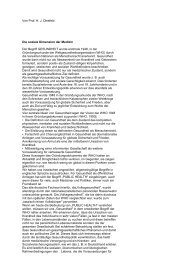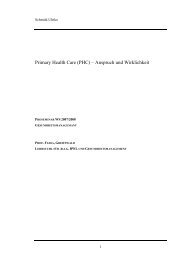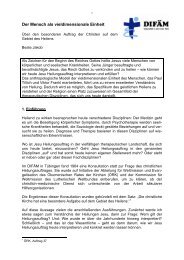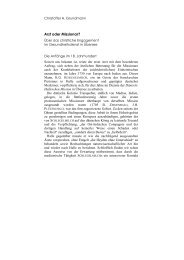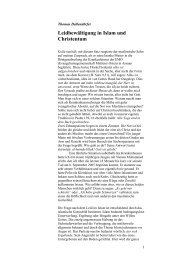(PHCII) - MMH/MMS
(PHCII) - MMH/MMS
(PHCII) - MMH/MMS
You also want an ePaper? Increase the reach of your titles
YUMPU automatically turns print PDFs into web optimized ePapers that Google loves.
Several other studies have been done on perception regarding the quality of obstetric<br />
care. According to Walker D et al (WHO 2002) in a study done in Kalimantan Indonesia<br />
where preference to home delivery among pregnant women was high was found due to<br />
poor quality of care which was an important contributor to excessive maternal mortality<br />
in many countries. Another study done in Conakry Guinea considering the short distance<br />
between the sub urban units and referral units being less than 10km usually covered by<br />
taxi, rates of maternal mortality related to uterine rupture were suprisingly high. Among<br />
other causes was inability to monitor deliveries adequately caused delays in transferring<br />
women with real obstetric complications (Thonneau et al 1994)<br />
Rizzuto and Stars (1997) pointed out that in Africa, staffs often lack clinical and<br />
interpersonal skills. Facilities are in poor repair drugs and medical supplies and<br />
equipment are not existent or expensive. Problem of inadequately trained staff and<br />
supplies also came up in focus group discussions, in Ekpoma[ Nigeria] it was noted that<br />
there was a negative perception of the quality of care available in which shortages of<br />
materials, adequately trained personnel and committed personnel in the modern health<br />
institutions serving the community Chiwuzie et al (WHF 1995).<br />
Brieger et al 1994 described other factors which keep women away from higher level<br />
health facilities are costs of hospital delivery, unfamiliar practices, in appropriate staff<br />
attitudes, restrictions with regard to the attendance of family members before seeking<br />
institutional care. Other factors included negative perceptions of the quality care<br />
provided, related to bureaucracy, lack of drugs and other supplies, none functioning<br />
equipments, absence of doctors especially at night and apparently unfriendly attitudes of<br />
staff towards patients, also referral from one level of care to another was not well<br />
organised.<br />
8




